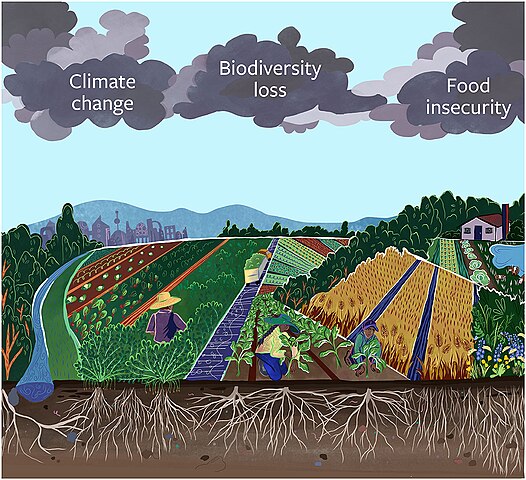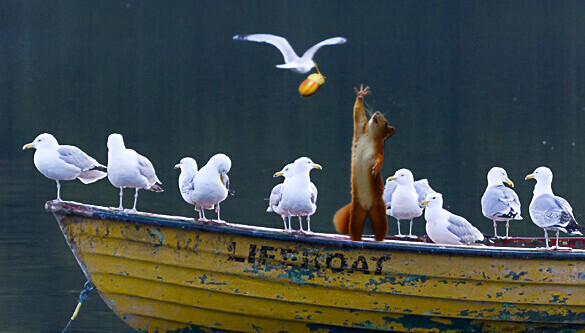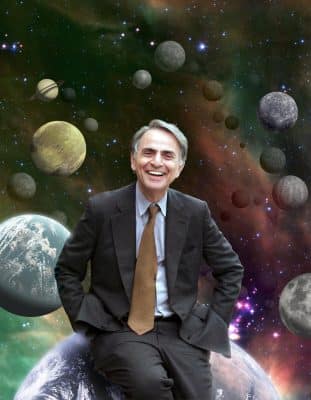Scientists enjoy categorizing, ranking, and naming. In the realm of Earth history, they have broken the process down into a series of epochs — like the Pliocene, Pleistocene, Holocene, etc. In the mid-1970s, some folks began feeling a need to create a new epoch, the Anthropocene, an era when human activities generated substantial eco-impacts.
Science has not yet agreed on an official definition. Some say it started with the explosive impacts of the Great Acceleration, which began in 1945. Others say the Industrial Revolution (~1780). Others say the Neolithic Revolution, the dawn of agriculture and civilization, which began about 12,000 years ago.
Dan Flores believes that it began much earlier, during the late Pleistocene, as humans migrated out of Africa. When they arrived in new regions for the first time, megafauna species were hit hard, resulting in a series of extinctions. He wrote, “The Pleistocene extinctions, in other words, look very much like the first act of the Anthropocene, the beginnings of what we now call the Sixth Extinction.”
These early ancestors were successful predators because they benefitted from technological advantages including spears, slings, blades, warm clothing, and fire. High-tech teams were able to kill powerful prey. Their high-tech advantages enabled humans to successfully colonize much of snow country — despite the fact that their lean and nearly hairless bodies were finetuned by evolution for tropical climates.
Close your eyes and imagine what northern Eurasia and the Americas would look like today if they had never been colonized by hominins — a vast, astonishing, Serengeti-like wild paradise of abundant life! Wow! Wild, free, happy… and perfectly healthy and sustainable! Imagine that!
When our ancestors first wandered in, snow country was home to a variety of huge animals that had enjoyed living there for a very, very long time — grazers, browsers, predators, and so on. A number of these species were originally from tropical regions of Africa and Asia, like the elephant, rhino, and sabertooth families. Over time, these tropical megafauna species gradually evolved traits that improved their ability to survive in the cooler climate, like warm coats of thick fur.
Snow monkeys (Japanese macaques) are interesting primates. Like our hominin ancestors, they originated in tropical Africa several million years ago. Over time, their ancestors wandered off into the outer world, and eventually migrated from Korea to Japan more than 300,000 years ago. Some now live in Japan’s chilly regions, where snow might cover the ground for four months, in depths up to 10 feet (3 m), and temperatures can plunge to -4°F (-20°C).
Snow monkeys adapted to snow country via a long slow process of evolution. So now, when winter approaches, their thin summer fur automatically grows and thickens into luxurious warm coats. During the summer, they build up body fat by feasting at the warm season buffet. In winter months, they survive on stored body fat, and rough foods like leaves and bark. They huddle together to keep warm. They don’t use fire. They’ve lived 300,000 years in Japan, and they’re still alive today because humans have allowed them to continue existing.
Also around 300,000 years ago, Homo sapiens emerged in Africa. From there, we migrated out of the tropics, and eventually colonized most of the world, including regions having temperate or arctic climates. Instead of gradually evolving beneficial adaptations like the snow monkeys did, our clever technology boosted our ability to keep warm and survive in chilly places.
In modern cultures, a belief in human supremacy is the norm. Our limitless brilliance is the mother of infinite miracles. We’ll easily fix climate change, save the world, colonize Mars, and enjoy endless love, peace, and happiness! The notion of Anthropocene has an aroma of human vanity. We are the most powerful and important critters on Earth!
Welcome to the Pyrocene
The four primordial elements are earth, water, air, and fire. Fire has existed on the planet for more than 400 million years, long before the dinosaurs. It will continue burning long after the human circus moves off the stage, as long as there is fuel, oxygen, and spark.
One mind-altering day, my brain crashed into the work of Stephen Pyne, the author of more than 30 books about fire, and one of the world’s foremost experts on fire history. He described an extremely crucial turning point in Big History: the domestication of fire. The earliest evidence of this has been found in South Africa, inside Swartkrans Cave. It dates to about two million years ago, long before the emergence of Homo sapiens. The two primary suspects are Homo erectus, or an earlier australopithecine hominin. Did we drive these predecessors off the stage?
Much later, Homo sapiens inherited the knowledge of fire making, and this ability eventually enabled us to become the dominant species on Earth, and the planet thrashing demolition team of today.
Greek mythology includes the story of Prometheus, a sassy man who stole fire from the god Zeus and gave it to humans. Stories say that he was the inventor of the fire drill, the tool for kindling flame. He boldly violated forbidden limits, and the gods severely punished him. His theft initiated the dawn of human misery.
As discussed earlier (see Mother Africa), the domestication of fire began in the same general timeframe as a wave of megafauna extinctions in Africa. Was this a coincidence? Peter Ungar noted, “…the sudden appearance of large concentrations of artifacts and animal remains around two million years ago surely signals a change in the role of hominins in their world.
Our ancestors had grabbed a place at the dinner table with the large carnivores. Hominins were eating antelopes, hippos, horses, giraffes, and elephants. Stone tools gave hominins better access to meat and marrow.
Pyne thinks that the Anthropocene idea is too limited. It is rooted in the emergence of agriculture and civilization. But the primary event that made these changes possible was the domestication of fire. So, instead of the narrower time window of the Anthropocene, he recommends the creation of a broader epoch called the Pyrocene (pyro means fire). It would include the events of the Anthropocene. The Pyrocene would close the curtains on the ancient Ice Age, and usher in the new and turbulent Fire Age.
Pyne described three categories of fire.
- First fire is natural, sparked into flame by lightning, volcanoes, etc. Its fuel is wood and vegetation. This fire has existed for 400 million years.
- Second fire is anthropogenic, ignited by hominins. It enabled agriculture, civilization, early industry, soil destruction, deforestation, and the massive expansion of human inhabited regions. Its fuel is wood and vegetation.
- Third fire ripped open the trap door to hell. Growth of the industrial era eventually required far more fuel than firewood could provide. The heartbreaking mistake was to introduce the fire breathing monster to fossil hydrocarbons (coal, oil, gas). Suddenly, humankind had access to a million times more energy dense combustible fuels. Shit! Trouble ahead!
Carbon Cycle
NOAA calls carbon “the chemical backbone of life on Earth. Carbon compounds influence the Earth’s temperature, make up the food that sustains us, and provide energy that fuels the global economy.”
Carbon is an element that exists in the atmosphere, oceans, living organisms, rocks, soils, sediments, fossil fuel reservoirs, etc. This is called the carbon pool. The pool is a magic act that allows the flow of carbon throughout the ecosystem, which is vital to the survival of the family of life. The pool includes both carbon sources and carbon sinks.
A carbon source emits more carbon than it absorbs. Major sources include the burning of coal, oil, and gas, and the emissions from making concrete.
A carbon sink absorbs more carbon than it releases. For example, a forest is a carbon sink, and it absorbs and stores carbon as it lives and grows. The two primary sinks in the global carbon cycle are the land and the water.
The atmosphere is neither a source nor sink. It constantly absorbs carbon emissions, and it’s constantly a source of carbon for plant life to absorb. In the atmosphere, carbon is allowed to pass back and forth between sources and sinks — something like a train station, an ongoing flow of in and out.
Prior to the industrial era, the carbon load in the atmosphere was a relatively stable closed loop — the volume of incoming carbon from sources was similar to the volume of outgoing carbon absorbed by sinks.
Today, that stable closed loop is long gone. When fossil energy is burned, CO2 is released into the atmosphere. From there, the water sink absorbs some of it, and so does the land sink. Unfortunately, these two sinks cannot absorb CO2 as quickly as it’s now being emitted, so the growing surplus accumulates in the atmosphere. Here is a chart that displays the explosive growth of global CO2 emissions from 1900 to 2020. Note that what the land and ocean sinks can’t absorb builds up in the atmosphere.
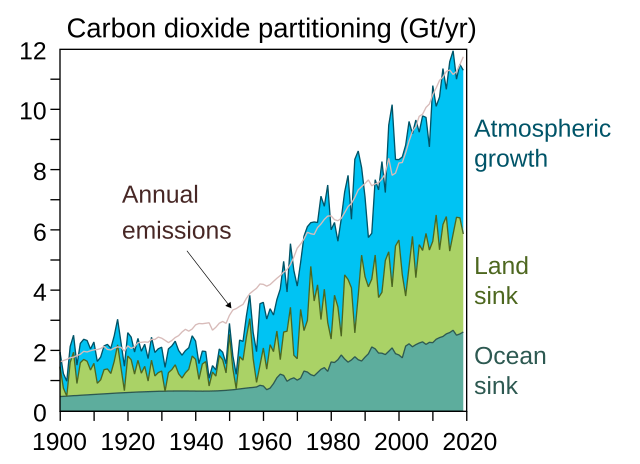
With the fantastically tragic mistake of industrialization, humankind unleashed a planet roasting monster that is raging against the vitality of life on Earth — a furious roaring bonfire of fossil carbon. This monster had been safely and harmlessly sleeping underground for millions of years. Unfortunately, some goofy smarty pants could not leave it alone, and all hell broke loose. Big Mama Nature screamed!
The normal and natural balancing act of atmospheric carbon got slammed. In 1850, the atmosphere contained 280 ppm of CO2 (parts per million). In 2024 it’s up to 426 ppm and growing. Consequently, the CO2 content of the atmosphere is now higher than at any time in the last 3.6 million years, and its volume is skyrocketing now. The planet’s climate is going batshit crazy, and the worst is yet to come. Ooops!
Global CO2 Emissions is a chart showing carbon emissions from 1800 to 2006. The four nations that emit the most carbon are highlighted. Note the enormous surge of carbon emissions since 1930!
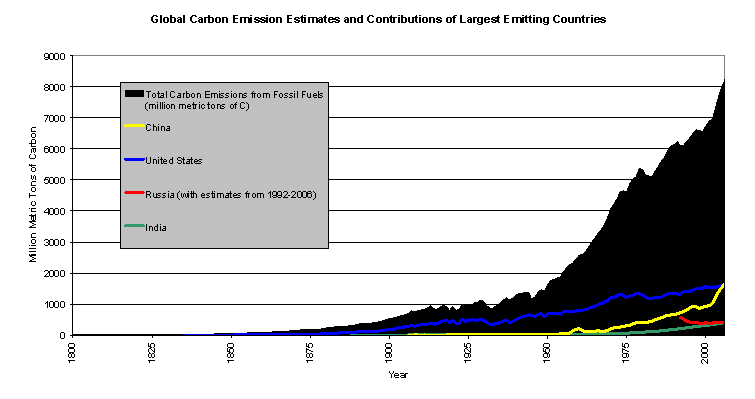
As we burn fossil energy day after day, year after year, faster and faster, enormous amounts of ancient carbon are released into the atmosphere, where it constantly accumulates, clobbers climate stability, and generates heat waves, droughts, catastrophic floods, monstrous storms, and huge wildfires. Earth is getting hotter and hotter. Thawing permafrost is releasing huge amounts of methane. Glaciers are shrinking, sea levels are rising, the family of life is getting brutally bludgeoned. Circle what is wrong in this picture.
If humankind suddenly went extinct next week, the permafrost would continue thawing, releasing additional methane, trapping more heat, and further boosting the temperature of the atmosphere and oceans. And every day we keep burning like crazy. The pyromania genie cannot be put back into the bottle. Sorry kids!
[Note: This is a new section from the rough draft of Wild, Free, & Happy. It’s finally getting closer to the home stretch. These samples start with sample 01, and follow the sequence listed HERE (if you happen to have some free time).
Author
Richard Reese lives in Eugene, Oregon. His primary interest is ecological sustainability, and helping others learn about it. He is the author of What Is Sustainable, Sustainable or Bust, and Understanding Sustainability and is currently working on a new book titled Wild, Free & Happy. Reese' blog wildancestors.blogspot.com includes free access to reviews of more than 196 sustainability-related books by a variety of authors both contemporary and historical, plus a few dozen of his own rants.

